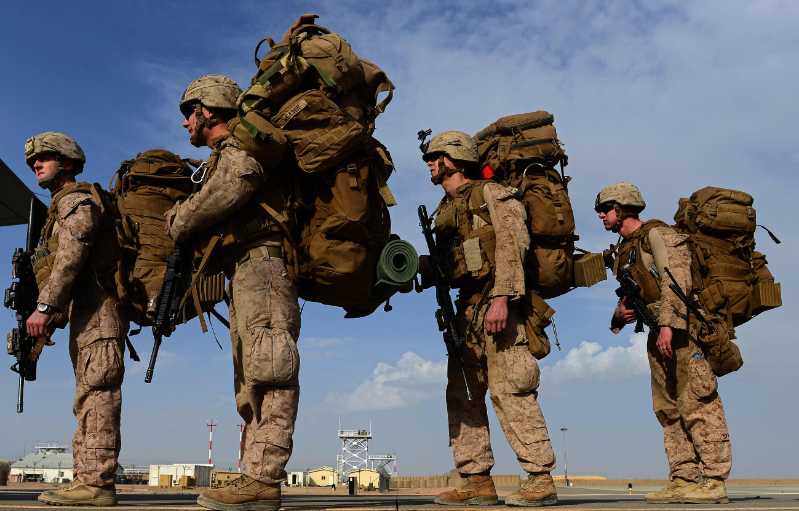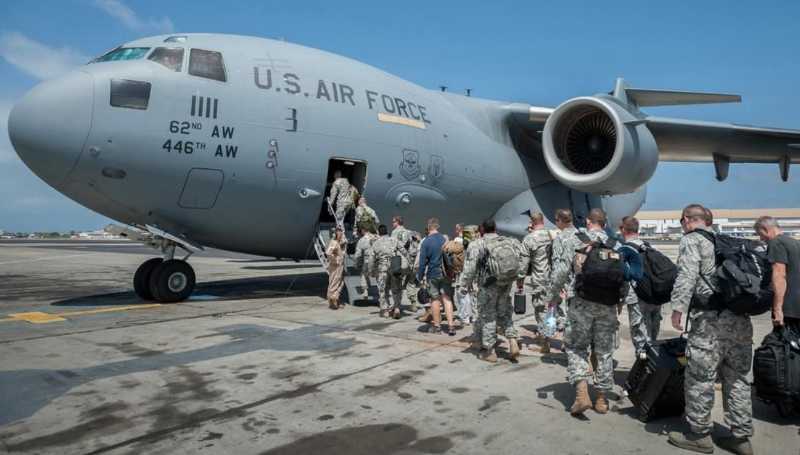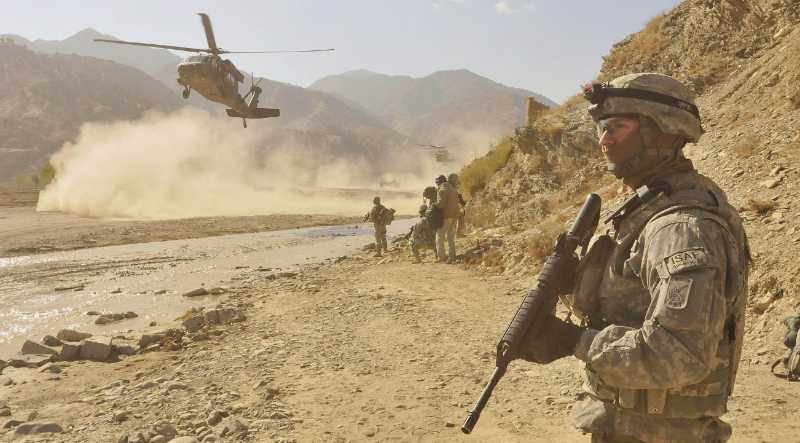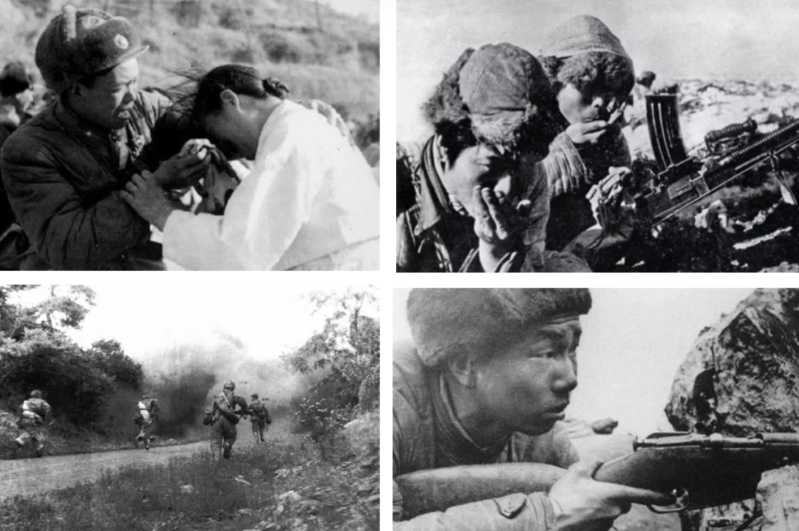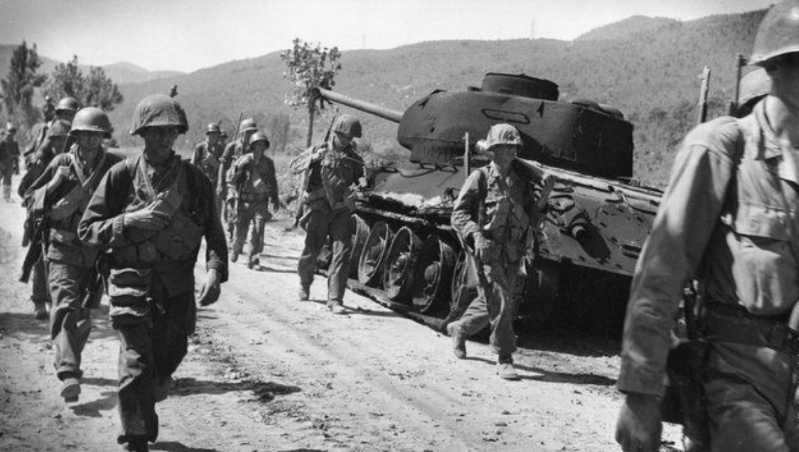According to a report on the Russian Izvestia website on January 26, 2024, the S-70 "Hunter" heavy-duty UAV developed by Russia has entered the final stage of testing and will be put into mass production at the Chkalov Aircraft Manufacturing Plant in Novosibirsk Oblast in the second half of this year. The news was revealed by Sergei Shomka, deputy governor of the state. As early as May 8, 2022, the Russian United Aircraft Corporation released a preparation video of the "Hunter" UAV on its YouTube channel, especially an image of an S-70 "Hunter" heavy attack UAV on the keel of one of the fighters. The company reported that the drone will be able to cooperate with the Su-57 and have a relative advantage when facing opponents of the same level.
Russia’s new generation S-70 "Hunter" heavy UAV is about to be mass-produced
The S-70 "Hunter" UAV is a subsonic stealth UAV with a flying wing layout developed by Russia’s Sukhoi Company. It is planned to be an intelligent stealth unmanned attack aircraft tailored for the Russian Air Force’s Su-57 fighter, that is, the "loyal wingman" of the Su-57 fighter
The S-70 "Hunter" UAV adopts a flying wing layout, weighs about 20 tons, has a wingspan of 19 meters, and is 14 meters long. The fuselage structure uses a large amount of composite materials, and the weapons are built into the belly compartment. The radar reflection surface of the whole machine is very small. At the same time, it uses stealth materials that can reduce the radar reflection cross-sectional area detection signal, further improving the stealth performance.
The "Hunter" UAV is powered by a jet engine and is equipped with an engine with a thrust of more than 8 tons. Because it is a single-engine, in order to prevent the S-70 "Hunter" UAV from encountering a malfunction in the air and causing the engine to stall, its engine has been specially modified and an anti-stall system has been installed. Therefore, even if all automatic devices fail, the engine will still switch to a low speed and will not be completely shut down, ensuring that the drone glides smoothly. It is reported that the take-off weight of the "Hunter" drone is 20 tons and the maximum flight speed can reach 1,000 kilometers per hour.
However, it is reported that the mass-produced "Hunter" drone may not be equipped with a booster. The drone does not need to move quickly or maneuver drastically, and relies more on its stealth characteristics to complete the designated tasks. It takes a three-person team to fly the "Hunter" drone, including an operator, a navigator and a communications expert, all of whom work together in a control box similar to a container.
The "Hunter" drone has two large built-in bomb bays on both sides of the engine, which can carry 2.8-ton large-sized cruise missiles and long-range air-to-air missiles, or small-sized precision-guided bombs for ground attacks. Russian media speculate that in the future it may be equipped with weapons including a variety of guided and unguided munitions, air-to-ground, air-to-air missiles, and a scaled-down version of hypersonic missiles. The main role of the S-70 is to act as a stealth weapon launch platform, infiltrating the opponent’s air defense system to perform strike missions. The S-70 "Hunter" drone has a series of free-floating and guided bombs and air-to-ground missiles, which enables it to attack targets outside the enemy’s air defense range. The drone is able to launch missiles at targets from a safe distance and return to the base unscathed. Moreover, all missiles and bombs will be hidden in the aircraft shell to reduce the visibility of the drone on enemy radars.
It is reported that the Russian S-70 "Hunter" drone is equipped with an SVP-24 targeting system. This system can take into account speed, altitude, wind, humidity and other factors as well as bombing time, and can achieve an accuracy that is said to be comparable to precision-guided munitions. The manufacturer says its accuracy can reach 3 to 5 meters. The report believes that precise bombing targeting allows Russian drones to strike a large number of targets with cheap ammunition without having to consume their limited smart ammunition inventory.
It is worth mentioning that the S-70 "Hunter" heavy combat drone is also the first batch of drones equipped with artificial intelligence computers. In addition to being able to use weapons to attack targets, most of its functions do not require the operator’s instructions. At this stage, the Russian army is working hard to improve the intelligent combat capabilities of the "Hunter" drone. In future large-scale military operations, the "Hunter" drone will be able to completely replace manned fighters and perform missions over the most dangerous areas, thus avoiding casualties of pilots. In joint operations, drones will solve all-round tasks by working on air and ground targets within the framework of network-centric interaction and under the command of leading manned aircraft.
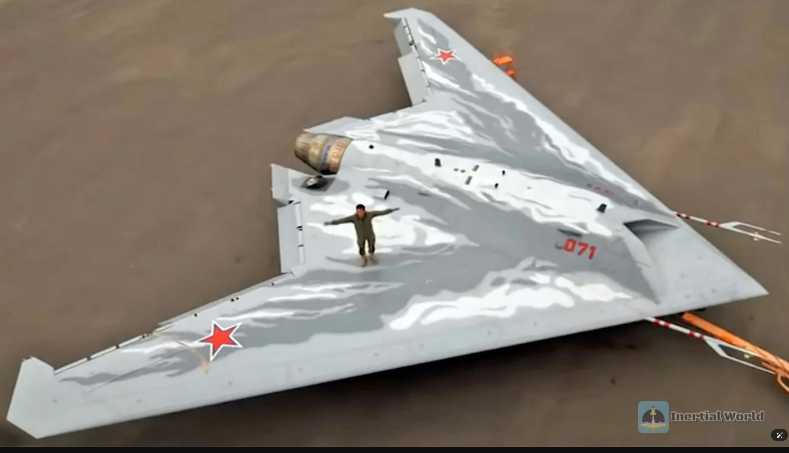
The "Hunter" drone is undoubtedly one of the most anticipated new drones in the world. Military expert Dmitry Boldenkov believes that the "Hunter" drone will become a powerful helper for the Russian Navy. He said: "The Soviet Air Force and Naval Aviation were equipped with this level of aircraft, namely long-range reconnaissance aircraft. They mainly fly over the ocean, study specific waters and monitor the presence and movement of enemy navies. This level of aircraft no longer exists as early as the 1990s. It would be a good thing if this reconnaissance capability could be restored now. In that case, there is no need to wait for satellites to fly over this area. It is enough to send drones, which can fly to the predetermined area and monitor the activities of potential enemies."
Russian Deputy Defense Minister Alexi Krivoruchko said that the "Hunter" is a highly intelligent system that can complete a variety of tasks alone, in groups or in cooperation with manned aircraft. Thanks to its stealth technology, the "Hunter" can tear through the enemy’s air defense system and carry out operations in situations where manned aircraft may face too high a risk, thereby opening up channels for ordinary fighters to enter the battlefield.
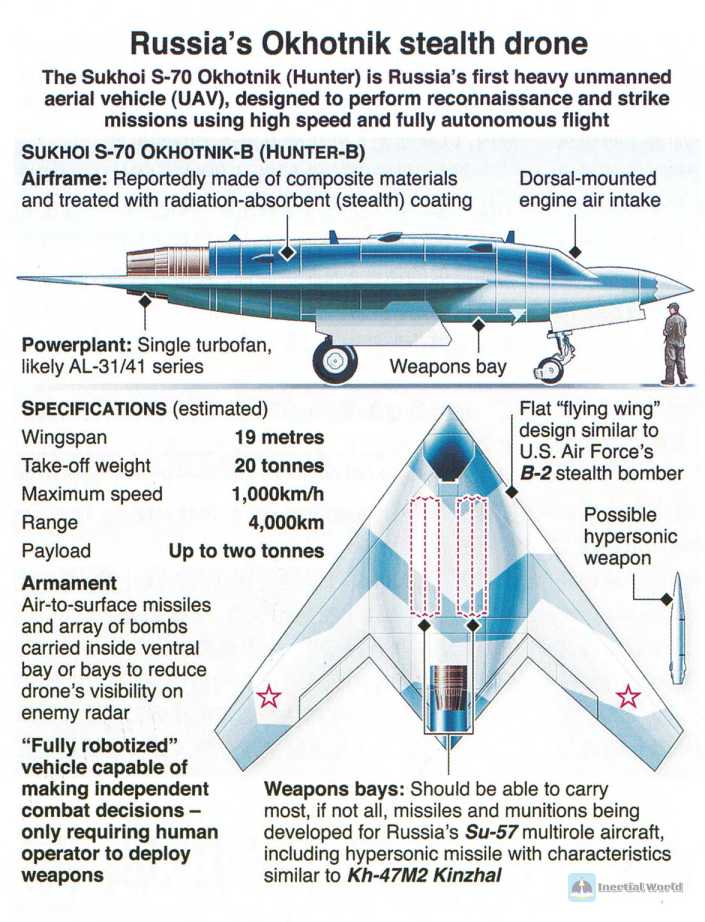
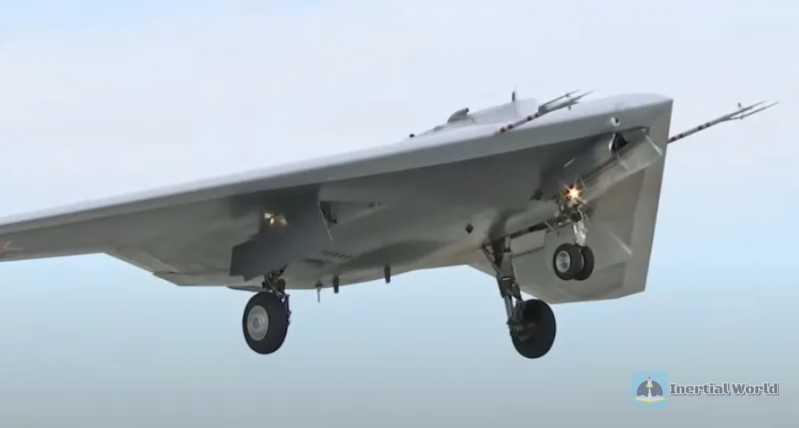
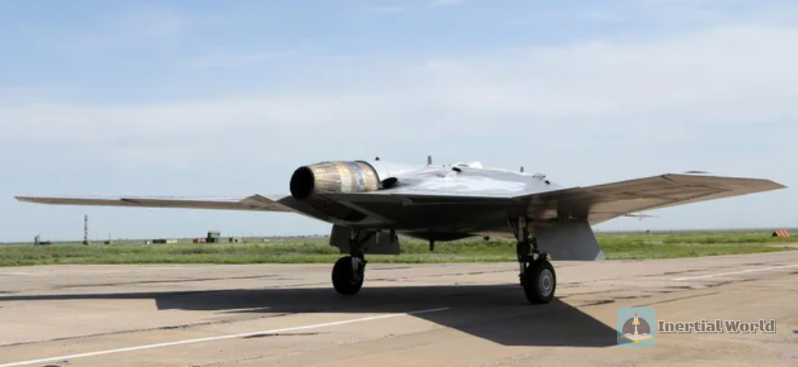

Russian military expert Viktor Murakhovsky believes that the "Hunter" UAV is an important research and development achievement of the Russian Aerospace Forces in the field of UAVs. This aircraft will play the role of a light multi-functional fighter. It can detect, direct Targets, strike ground targets, deal with air strike tools and patrols, and can complete tasks independently or form mixed formations with manned aircraft. This drone is built with artificial intelligence elements and can serve as the vanguard of campaign and tactical aviation formations. These weapons are needed to break through and suppress air defense systems and strike areas well covered by enemy air defense systems and fighters. In such operations, stealth capabilities and improvements to ensure this capability are important.
Victor Murakhovsky said that the advantage of the "Hunter" is that even if it is shot down, it will not cause the loss of pilots, and its performance is comparable to that of manned aircraft. Murakhovsky said: "It can be sent to perform various dangerous tasks that ordinary drones cannot perform. This is the first project of its kind developed simultaneously with the Su-57 fighter. ”
But at present, the "Hunter" UAV also has certain defects. First of all, the stealth performance is not perfect. From the photos that have been exposed so far, the details of the upper part of the "Hunter" UAV, including the air intake and tail nozzle, various antennas, and the front camera system, are not perfect. For example, its engine tail nozzle is directly exposed, which will limit the overall stealth of this UAV. Moreover, the surface of this UAV has not been flattened, and various fasteners and seams are exposed, which will also affect its radar stealth capability.
However, it is reported that the "Hunter" UAV is expected to cover the tail nozzle of the engine after the first two and the last two prototypes are launched, and a large amount of composite materials will be used to further The Hunter UAV will further improve its stealth performance. In the future, the Hunter will use a rectangular engine nozzle instead of the common circular one. Currently, only the F-22 Raptor of the United States uses this stealth engine nozzle technology. The new engine nozzle can more effectively dissipate the heat in the tail jet, making it more difficult for the aircraft to be hit by missiles equipped with heat-seeking and infrared guidance heads.
In fact, the Hunter UAV model displayed at the Moscow Air Show and the combat imagination map of the Hunter UAV released by the Russian media have given the future design changes in the stealth of the tail nozzle of the aircraft. The new tail nozzle shape is similar to that of the B-2 stealth strategic bomber. The upper edge of the nozzle is W-shaped, and the lower edge is V-shaped. The lower edge of the nozzle protrudes a lot further back than the lower edge. This shape On the one hand, it can ensure the aerodynamic stealth of the tail nozzle, and on the other hand, it can improve the infrared stealth capability of the "Hunter" UAV. During the flight, the cold air flowing through the upper edge of the engine tail nozzle will mix with the high-temperature combustion gas of the engine in advance, significantly reducing the exhaust temperature of the engine tail nozzle, thereby reducing the infrared characteristics of the tail area and achieving infrared stealth. Similar designs have been widely used on F-117, YF-23 and B-2, and are a relatively mature engine tail nozzle stealth treatment measure at this stage.
Secondly, the cost of an S-70B "Hunter" UAV may be as high as 20 million US dollars. In comparison, the cost of the US "Valkyrie" UAV is only 2 million US dollars. The US Air Force has always believed that unmanned wingman It should be "consumable", that is, it can be consumed in combat. The "Hunter" is an expensive aircraft, and the Russian Ministry of Defense will need some time to expand its production and reach the point where the drone can truly fly autonomously in future combat.
S-70 "Hunter" drone design matches Su-57
Russian News Agency Moscow reported on February 21, 2021 that Russian test pilot Yevgeny Frolov revealed that the "Hunter" unmanned fighter was developed by the Russian Sukhoi Design Bureau based on the concept of "loyal wingman" and designed and manufactured according to the "flying wing" aerodynamic layout. It is used to make up for the lack of stealth capability of the Su-57 and improve the long-range precision strike capability of the Russian Aerospace Forces, leaving potential enemies nowhere to escape.

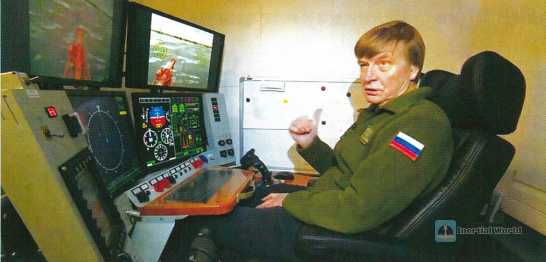
The "loyal wingman" refers to a UAV that can perform tasks in a group with traditional manned fighters. Unlike traditional combat UAVs, the "loyal wingman" will not be finely remotely operated by humans, but will intervene in the data link system of manned fighters, and the pilot of the manned aircraft (i.e. the lead aircraft) will issue orders to it, and then the artificial intelligence system will decide how to execute the orders of the lead aircraft. At present, the "loyal wingman" has become the focus of attention and research and development in countries around the world.
The "Hunter" UAV is a subsonic UAV with a flying wing layout and has a certain stealth capability, similar to the XQ-58A "Valkyrie" unmanned wingman being developed by the US Air Force. Russia’s idea is to let the "Hunter" UAV with automatic flight capabilities fight side by side with the manned Su-57 fighter, but this requires complex artificial intelligence technology. At this stage, the Russian Ministry of Defense is studying different types of algorithms that allow the Hunter drone to fly autonomously, navigate and possibly engage targets after human operators approve flight modes, target selection and identification.
Currently, the Hunter has conducted several joint tests with the Su-57. The two aircraft can transmit information to each other to complete operations such as assigning targets in flight, maintaining distance from each other and maneuvering to evade missiles.
The S-70 Hunter made its first flight on August 3, 2019. The first prototype of the Hunter was tested using a functional simulator that included carrying air-to-air missiles, and also dropped bombs on ground targets at the Ashuluk shooting range. On September 27, 2019, the S-70 Hunter flew in formation with the Su-57 fighter for the first time. During the period, the drone flew in automatic mode at an altitude of 1,600 meters for 30 minutes. During this test, the drone tested interaction with the lead aircraft in autonomous mode to extend the fighter’s radar range and instruct the use of long-range kill means without entering an air defense confrontation area.
In June 2021, Russia formulated a plan to control drones from Su-57 fighters. One fighter is expected to lead four "Hunter" drones to jointly strike air and ground targets. The pilots of the Su-57 fighter will be able to coordinate the operations of four latest "Hunter" drones at the same time. The press office of the Russian United Aircraft Corporation has also previously stated that the latest "Hunter" drone will be able to interact with the Su-57 fighter in a network center to jointly strike air and ground targets. In joint operations with fifth-generation aircraft, the "Hunter" drone will be responsible for handling a series of tasks and strike ground and air targets under the command of the Su-57 pilot.
Russian sources further revealed in late July 2021 that Russia is developing a special two-seat command Su-57 fighter to control a group of the latest "Hunter" unmanned fighters for air combat and ground strikes. The source said: "In order to control the advanced ’Hunter’ drone, a two-seat command variant of the Su-57 fighter will be created. The fighter is already under development and is speculated to be able to control about 4 ’Hunter’ drones."
On December 14, 2021, military observer Alexi Ram said that Russian aircraft manufacturers have achieved major success in the "Hunter" project. Now, Russia already has a flying prototype of the new S-70. It is actively participating in tests, including joint tests with the Su-57 fighter. However, Ram said that strictly speaking, the S-70 is not a real fighter, but a sample. But it can verify the overall concept and individual technical solutions of this powerful unmanned attack aircraft. It is reported that this new drone uses a flat tail nozzle, which makes it difficult for radar to detect. Moreover, there are signs that the composition of the onboard equipment has been significantly adjusted. Therefore, the Russian Aerospace Forces will soon receive a real reconnaissance and strike drone.
On May 28, 2022, a Russian military insider revealed that the Russian "Hunter" heavy stealth attack drone recently launched an air-to-ground missile equipped by the Su-57 stealth fighter at a ground target during a test flight. The test showed that "the drone can use the Su-57’s air-to-ground missiles to effectively strike small camouflaged targets around the clock."
The Russian army is expected to achieve intelligent networked combat between the S-70 "Hunter" and the Su-57
In the future information battlefield, as a good helper and partner of the Su-57, the "Hunter" drone has two core functions when performing combat missions: one is to assist in "kicking the door". The Su-57 and the "Hunter" conduct joint operations, which will allow the Hunter to fly to the most dangerous airspace to suppress and destroy the enemy’s radar system and air defense missiles. In this way, the Su-57 will become safer in the process of performing tasks; the other is to "assist" in air combat. The Russian army hopes to turn the "Hunter" into an air combat, stealth version of the missile cabin, let it fly in front of the Su-57, obtain targets from the Su-57 fighter or early warning aircraft through the data link system, and then suddenly open the bomb bay and launch air-to-air missiles to conduct long-range secret hunting against enemy fighters or high-value air targets.
The Su-57 fighter is equipped with an artificial intelligence system with a high degree of automation, especially the integrated control system and automatic search and aiming equipment. These functions will enable the aircraft to fully enter the automatic combat mode. Equipped with a brand-new avionics system and the most advanced airborne electronic equipment, including a powerful airborne computer, also known as the "electronic co-pilot", it has achieved a high degree of automation in flight and combat, allowing pilots to concentrate on completing combat missions and cooperate with drones.
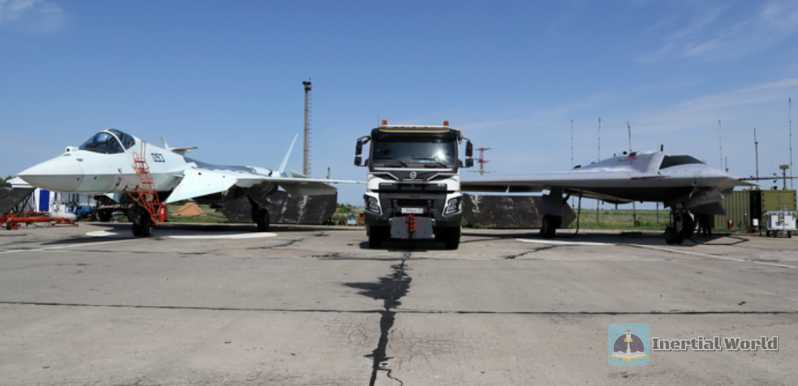
Russian fighter pilot Vladimir Popov pointed out that the Su-57 also performed well in collaboration with other combat action participants and in exchanging data. He mentioned the automatic control mechanism of the Su-57, "In fact, the Su-57 has a mechanism that plays the role of a virtual co-pilot. This also helps to select and aim at targets." The Su-57 is able to work in multi-task mode, "For example, if a ’flagship’ drone appears in the sky, then we can calmly attack it while continuing to perform other tasks - continuing the flight route and monitoring ground targets, etc." The Su-57 is extremely easy to operate because many things are entrusted to the computer system. As a combat unit, each Su-57 launches missiles and bombs with high precision, "For example, if you plan to attack a bridge in enemy territory, you can only aim at its pillars without destroying the entire structure.

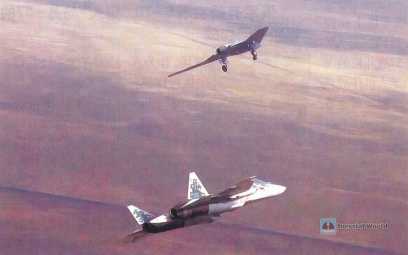
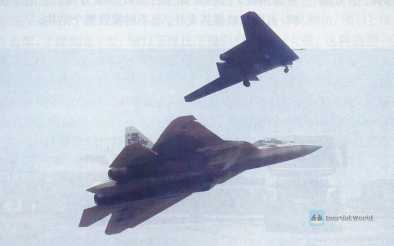
The intelligence of the Su-57 makes it easier for the S-70 "Hunter" drone to achieve intelligent networked combat with the Su-57. At present, the Hunter UAV has carried out several accompanying flights with the Su-57. The two aircraft can transmit information to each other to complete operations such as allocating targets in flight, maintaining distance from each other, and maneuvering to avoid missiles. Russia is actively exploring the intelligent networked combat technology of both sides.
In addition, the Hunter UAV can cooperate with the Su-57 and can use the full set of weapons of the Su-57. During the test, the Hunter UAV fired missiles equipped with the Su-57 fighter at ground targets. The source said:
"The first test prototype of the Hunter UAV conducted a series of missile firings during the flight test. Using several air-to-surface missiles equipped in the arsenal of the fifth-generation fighter Su-57, live ammunition was fired at ground targets." The source added that the test showed that "the drone can effectively strike small camouflaged targets with missiles all day and night." He said that all launches were successful. Sources from the military industry once told Sputnik that the Hunter UAV used unguided weapons-free-fall aerial bombs in the test.
There is no doubt that in the future, the Hunter drone will be able to attack targets according to the instructions issued by the Su-57 stealth fighter. The pilot does not need to issue voice commands. The Su-57 will automatically lock and assign targets to the Hunter drone, and the Hunter drone will then use the target information provided by the Su-57 to attack. The Su-57 and the Hunter drone will work together to form a mixed aviation regiment and adopt new strategies and artificial intelligence elements. This will fundamentally improve the combat capabilities of the Russian Aerospace Forces. Drones and manned fighters will form an impenetrable "protective shield" covering hundreds or even thousands of kilometers, and carry out high-precision strikes on important facilities of potential enemies.
Russia has high hopes for the intelligent networked combat of the Hunter and Su-57. Major General Vladimir Popov, an honored Russian military pilot, said, "The speed, flight altitude and maneuverability of the S-70 will be comparable to the fifth-generation aircraft Su-57. It is a jet aircraft, almost like an airplane, without a pilot, and the process of controlling and performing flight missions is highly automated. In addition, it is integrated into the general automated aviation control system. This enables him to perform combat missions independently and together with manned aircraft." According to the Russian Satellite News Agency, the Russian Ministry of Defense decided to form a "Hunter" unmanned attack aircraft unit in the Western and Southern Military Districts in 2024.
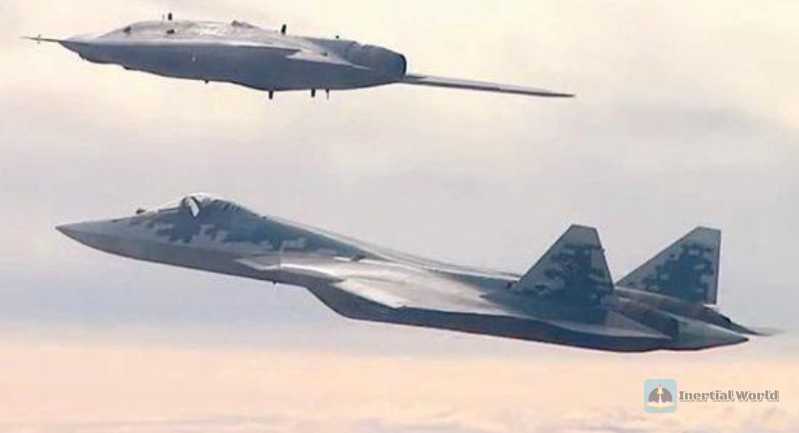
Military expert Yuri Knutov also agrees with this assessment of the combined capabilities of the Su-57 and "Hunter". "The Su-57 is a unique machine, especially with the addition of the ’Hunter’ drone. In fact, they form a complex that can be traced back to the sixth generation." Knutov believes that the integration of a network-centric control system can turn the Su-57 into a command post, thereby improving the efficiency of air combat. "With such a system, the Su-57 can not only control drones, but also Su-35 aircraft. This combination of fighters and drones will greatly improve the combat capability of the VKS. Providing these aircraft to the troops will help solve the task of breaking through and overcoming the enemy’s air defense at a high level with minimal losses."
Of course, in addition to cooperating with the Su-57 as a "loyal wingman", the "Hunter" drone, as a stealth drone with a high degree of informatization, intelligence and autonomy, can also fight alone. With its excellent stealth performance, the "Hunter" drone can quietly bypass the enemy’s air defense system without human command and enter the local hinterland. Relying on the various weapons and equipment mounted on its large payload, it can carry out search, reconnaissance, surveillance and other tasks, and even conduct autonomous strikes when necessary, and then retreat and return to the base.




